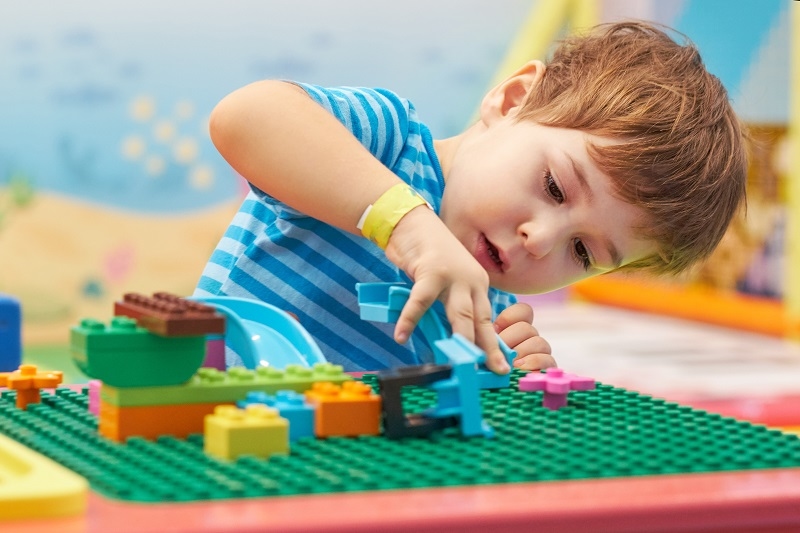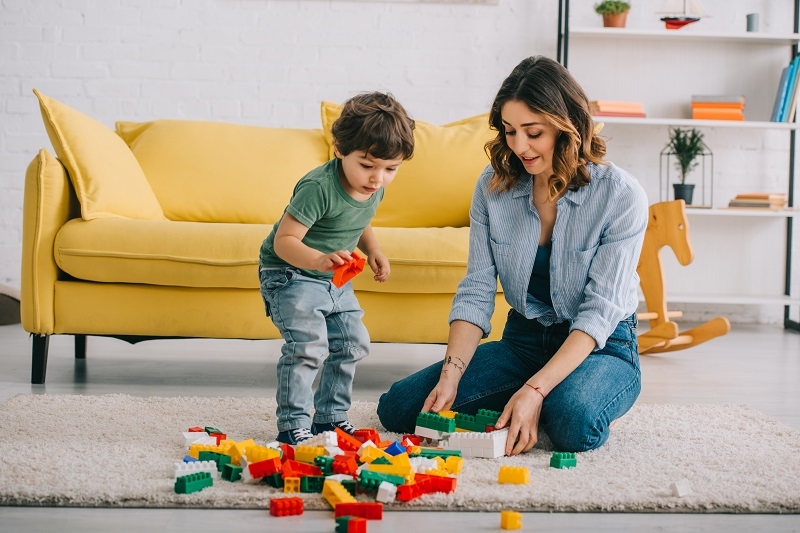
Building Blocks Boost Creativity and Learning in Kids
Building blocks may not be the flashiest or most high-tech toy, but they create a great home for a child's creativity, imagination, and critical thinking. From colorful LEGO boxes to traditional wooden blocks and contemporary construction toys, these play staples have been molding young minds for decades. They do more than amuse them-they give kids a foundation for creative thinking, spatial reasoning, and even early engineering skills.
In this digital-first era, surrounded by screens, building blocks are a return to real, hands-on tools that help cultivate curiosity and imagination. Whether they are plain old stacking blocks or sophisticated, creative construction sets, building blocks provide children the opportunity to discover, plan, and build, all while developing important life skills.
Why Building Blocks Are More Than Toys
Parents often view building blocks as toys, but teachers and child development experts recognize their larger advantages. Building blocks are "open-ended play tools," meaning there are boundless possibilities for how they can be used. Open-ended play allows children to experiment, fail, and learn from mistakes-skills that are all essential to creativity and innovation later in life.
Here are a few ways that building blocks encourage development:
- Imagination Expansion: Children can take a stack of blocks and create castles, cars, bridges, or entire cities.
- Problem-Solving Skills: All designs require thinking and planning, as well as trial and error.
- Fine Motor Skills: Placing, balancing, and stacking blocks improves coordination.
- STEM Learning: Most engineering toys introduce children to balance, symmetry, and a basic understanding of mechanics.
Through experimentation, building blocks empower children to think outside the box, be quick to adapt, and test new ideas without fear.
LEGO Sets: A Guide to Expressive Creativity
Perhaps the most recognizable type of building block is LEGO sets, which are ubiquitous worldwide. LEGO is not only a brand-it's an educational tool that helps kids learn structured creativity. Traditional wooden blocks provide open-ended play, but LEGO introduces the aspect of directed building.
Benefits of LEGO Sets For Kids
- Structured Imagination: LEGO sets give a child a start, but they can easily dismantle and rebuild their own creations.
- STEM Engagement: LEGO sets commonly have gears, pulleys, and motorized elements to allow children to explore the fundamentals of engineering.
- Collaboration: Building LEGO creations with siblings or friends encourages teamwork and communication.
A child can be building a spaceship, or a city, or a new inventive creation, and LEGO sets can help a child understand that imagination can be a framework, but still be limitless.
Wooden Blocks: Accessories that Define Play
Before digital toys and branded toys, it was wooden blocks that were the centerpiece of childhood play. Wooden blocks may seem pretty simple compared to high-tech toys, but wooden blocks are among the best creativity-inspiring tools.
Why Wooden Blocks Still Matter:
- Open-Ended Play: No rules, no instructions-just free imagination.
- Sensory Development: Wood's rough surface and weight make for a sensory, hands-on experience.
- Durability: Wooden blocks can last for many years and become heirlooms.
Children can use their own creativity without limitations with wooden blocks, allowing for cognitive development and exploring imagination.
The Role of construction toys in cognitive development
Modern construction toys build on the basic premise of traditional building blocks with moving pieces, invented connectors, and even more complex building capabilities. Construction toys present a middle ground between unstructured play and formal design, and allow children the opportunity to exercise logical thinking.
Some examples are:
- Magnetic building sets that introduce lessons about balance and polarity.
- Click-together pieces that resemble real buildings.
- Sophisticated kits that enable children to construct functional devices.
Building toys provide children with opportunities to not only use their imagination but also develop critical thinking skills and perseverance. When something doesn't work, kids learn not only how to fix it, but also to try again, which is essential in finding new solutions and inventing positively.
Inventive Building Sets: Encouraging Young Inventors
As toy design technology improves, inventive building sets are transforming the way kids play with blocks. Inventive building sets incorporate imagination and themes such as robotics, architecture, or vehicles to introduce children to specialized disciplines at an early age.

Why do parents love inventive building sets?
- Learning Focus: Most kits are designed to support learning STEM skills.
- Connection to the Real World: Kids will build replicas of world-famous landmarks, complex machines, or even their dream vehicles.
- Confidence Boost: Completing a difficult kit is a source of pride for kids.
Creative building kits create a legacy of impact on the future generation of inventive designers, architects, and engineers, combining playfulness with learning.
Engineering Toys: Building the Future Skills
Engineering toys encompass more than blocks, as they include a variety of mechanical and scientific concepts. Engineering toys prepare kids for the technology to come, and also include pulleys, gears, circuits, and robotics.
Benefits of Engineering Toys:
- Teach to demonstrate cause-and-effect relationships.
- Encourage critical reasoning and logical thinking.
- Teach persistence and determination when things don't go right.
- Provide exposure for kids to STEM career pathways.
Engineering toys tend to start as basic block-based structures and grow into more complex creations, allowing kids who already love building blocks to have more fun!
Building Blocks: Building Soft Skills
It is clear to see that building blocks have some physical and mental benefits, but they also have a huge impact on developing soft skills.
- Collaboration: When working as a group to build together, kids learn to work as a team and communicate.
- Patience and Concentration: Intricate builds demand, focus, and persistence.
- Emotional regulation: Natural consequences teach a child how to deal with adversity.
- Self-esteem: Accomplishing a design boosts a child's self-esteem.
These "soft skills" are equally important as academic learning, preparing the child for life and workplace problems in the future.
The Parent and Teacher's Role in Block Play
For maximum benefit from building blocks, parents and teachers need to actively facilitate and direct children's play. Some tips follow:
- Encourage Discovery: Let children play on their own without a lot of interference.
- Ask Open-Ended Questions: Requesting, "What are you constructing?" or "How can you build it taller?" will help children reflect on their building.
- Mix Toys: Provide LEGO, wood blocks, and construction toys together for more variety in play.
- Build Play Areas: Create a space for children to keep their structures up for a few days. Long-term projects will be encouraged.
By creating a healthy play atmosphere, adults can encourage children to be both creative and think critically.
The Lasting Legacy of Building Blocks
The impact of building blocks doesn't end with childhood. The majority of architects, engineers, and designers credit early block play with initiating their careers. The skills that kids learn: problem-solving, imagination, tenacity; these skills will stay with them as adults.
Even today, even in a digital age, building blocks are timeless. They remind us that sometimes one of the best learning tools can often be one of the simplest.
Why Every Home and Classroom Needs Building Blocks
Building blocks can be more than toys; they can be great learning tools that bring out creativity, flexibility, and innovation. Whether you have LEGOS, wood blocks, construction toys, imagination building kits, or engineering toys, each form has its own benefits to help develop a child's mind and imagination.
As parents and educators use building blocks to enhance play, they not only provide children with fun but also provide them with a lifelong key to creativity and problem-solving.
Conclusion: Unleashing Creativity, One Block at a Time
Despite living in a high-tech, rapid-fire world, building blocks offer a timeless opportunity to spark creativity, imagination, and problem-solving. Children learn skills for the future, whether it's through the straightforwardness of wood blocks or the complexities of engineering toys.
Best of all, building blocks make learning fun! They teach us that creativity is built piece by piece, one block at a time.
Categories
- Arts & Entertainment 100
- Automotive 186
- Business & Professional Services 219
- Construction & Contractors 298
- Clothing & Accessories 76
- Community & Government 95
- Computers & Electronics 74
- Education 75
- Food & Dining 86
- Health & Medicine 186
- Legal & Financial 100
- Home & Garden 179
- Industry & Agriculture 105
- Media & Communications 44
- Personal Care & Services 73
- Real Estate 68
- Shopping 74
- Sports & Recreation 87
- Travel & Transportation 102
- Animals & Pets 11
- Arts 9
- Community 9
- Chain 607
- Computers & Internet 8
- Health Care 10
- Communication & Media 7
- Shopping & Retail 10
- Health & Beauty 9
- Education & Schools 8
- Financial & Legal Services 14
- Home & Office 13
- Lawyers & Legal Services 7
- Financial & Services 1
